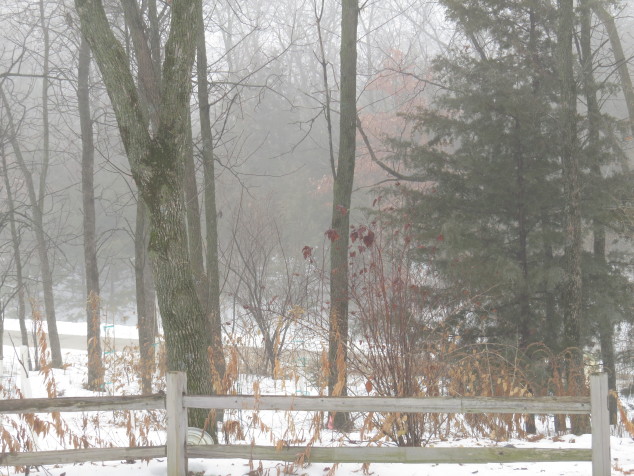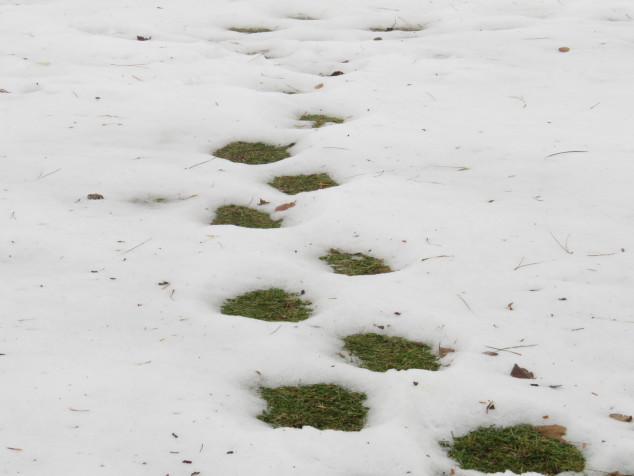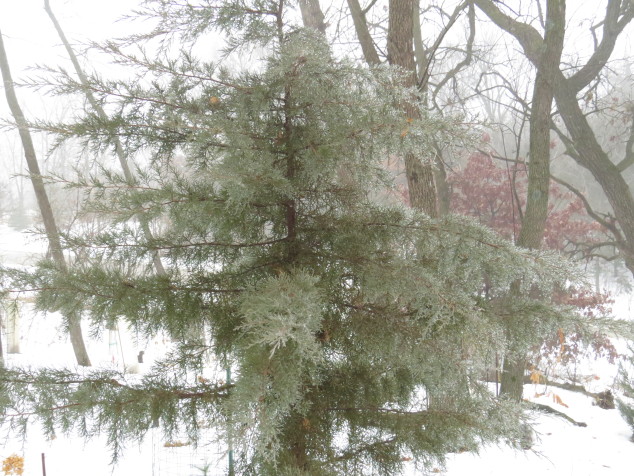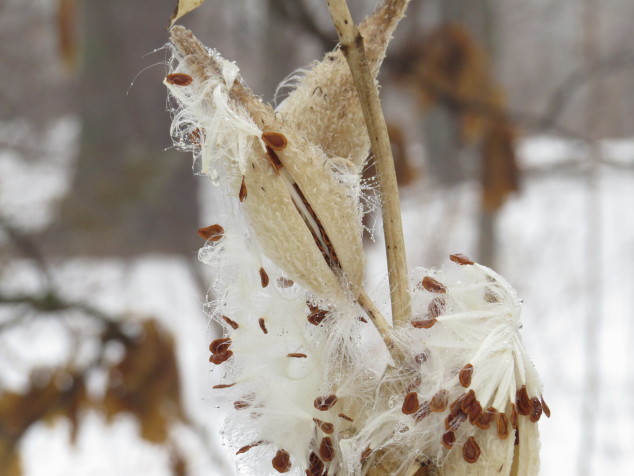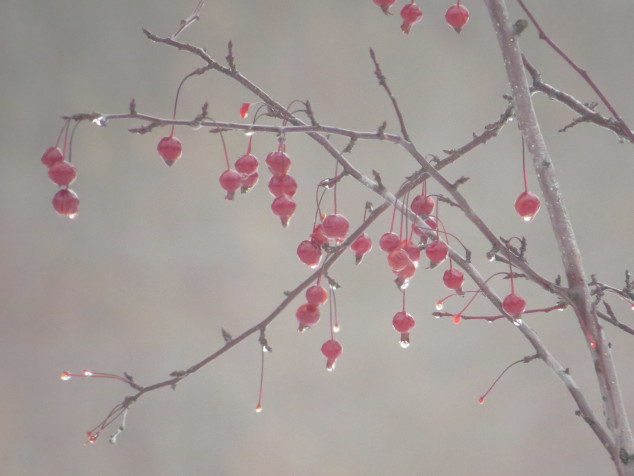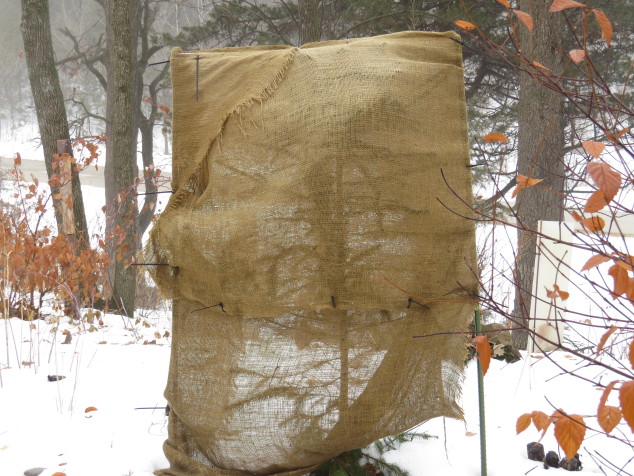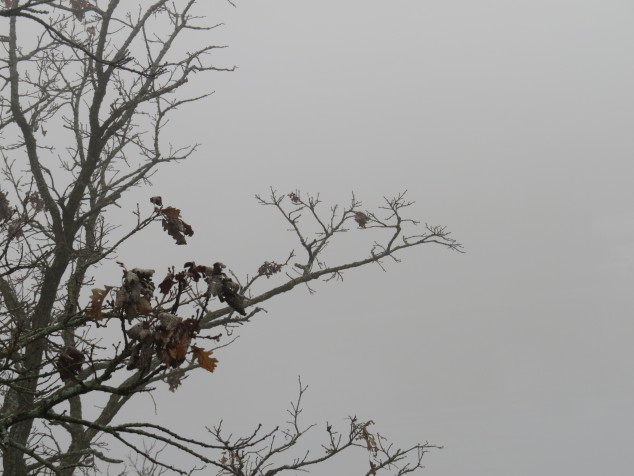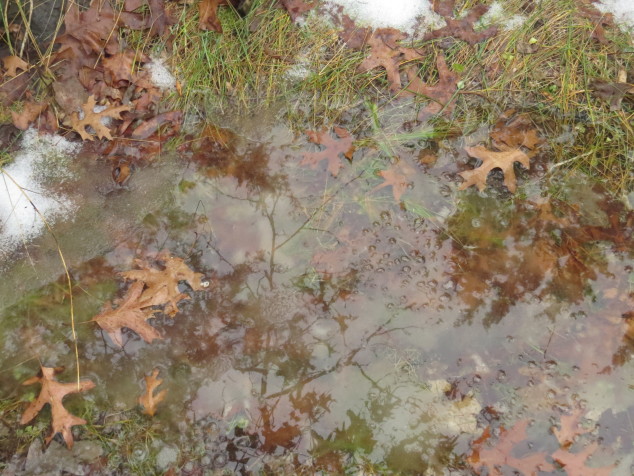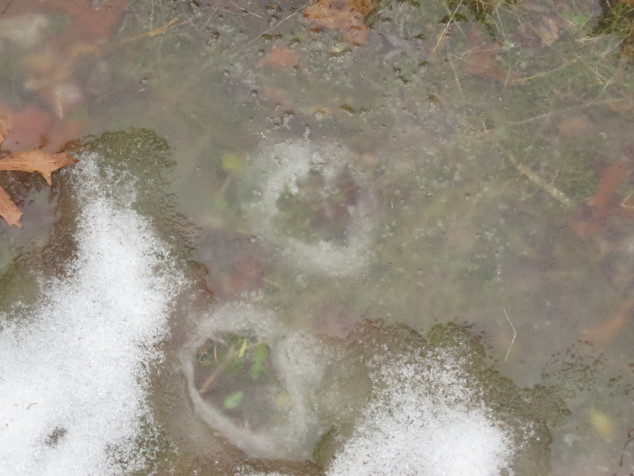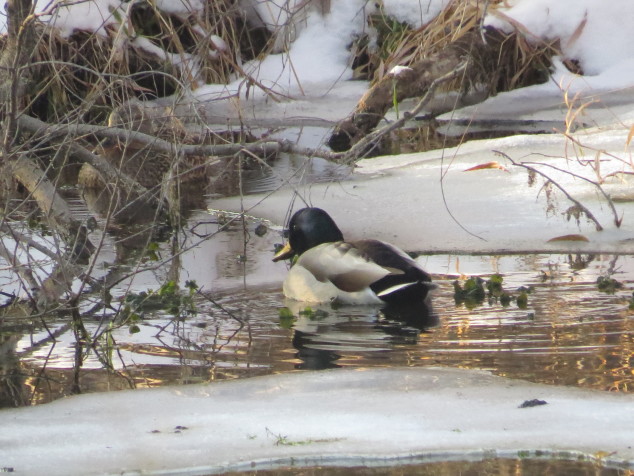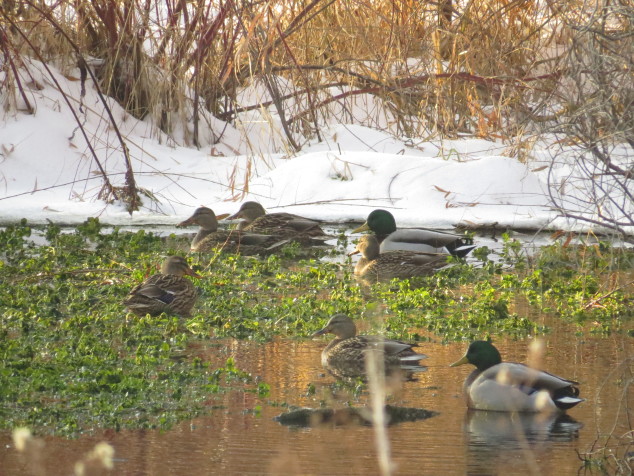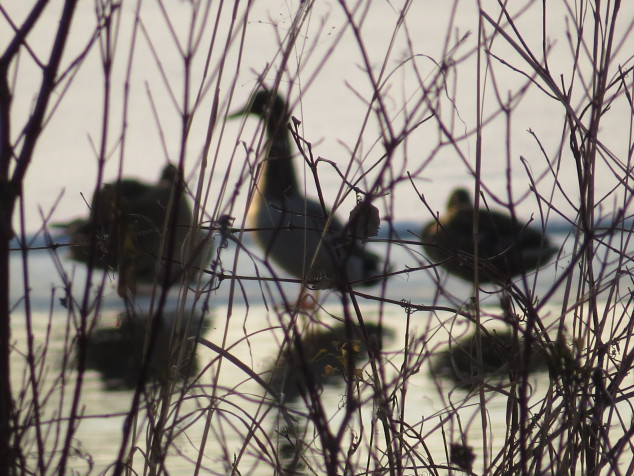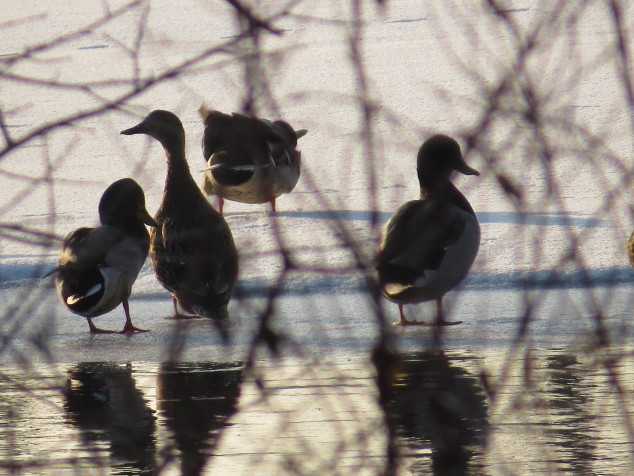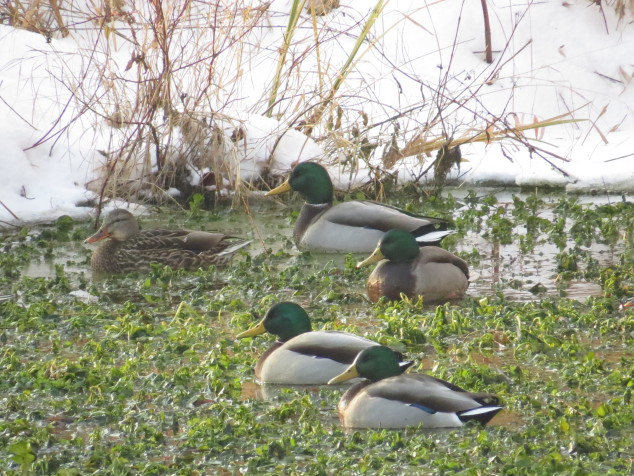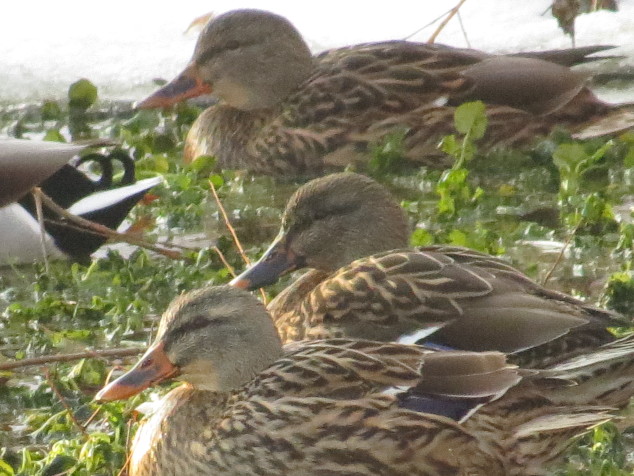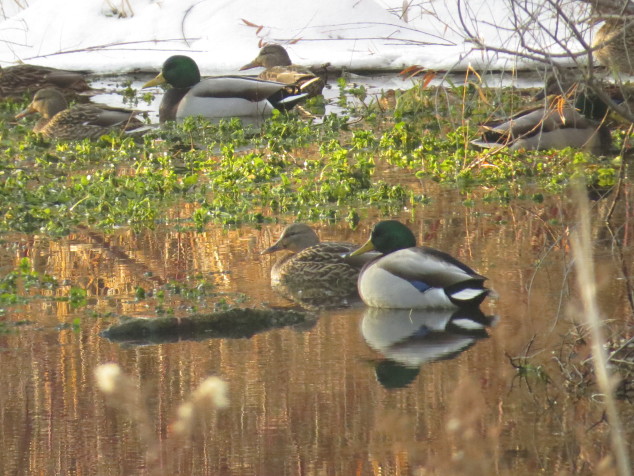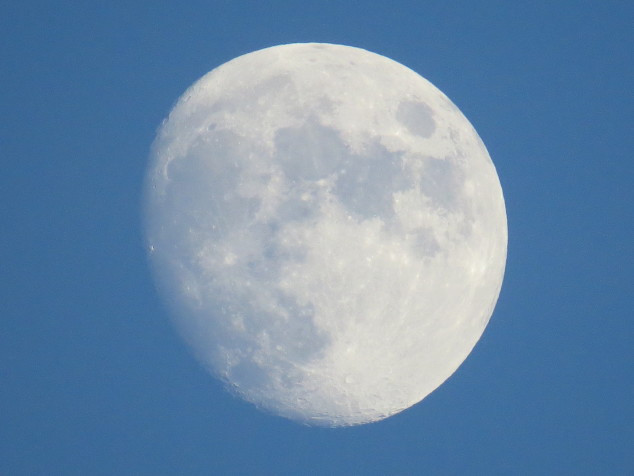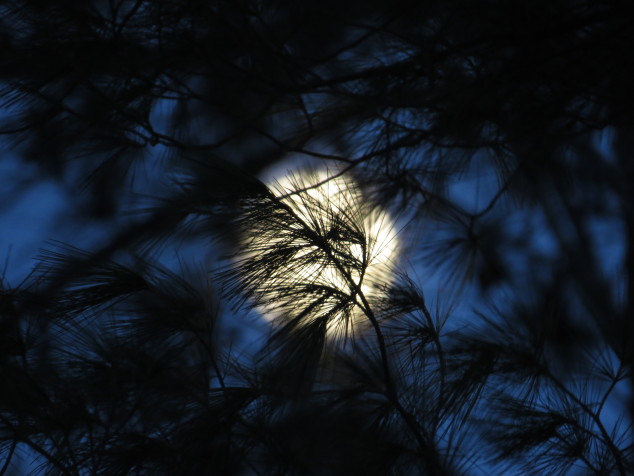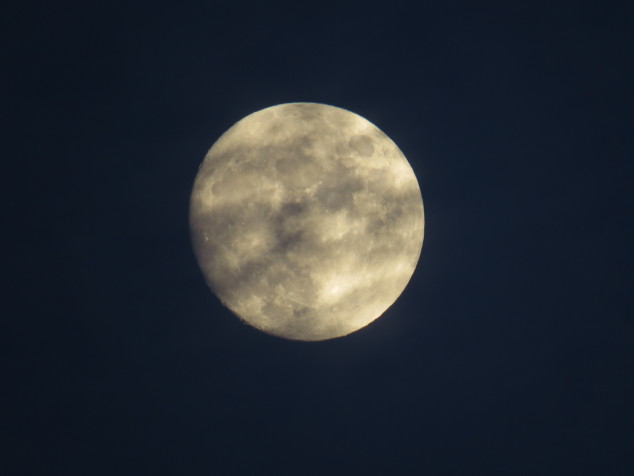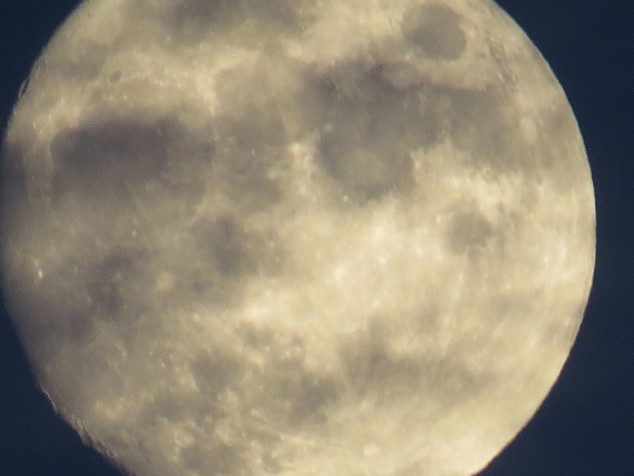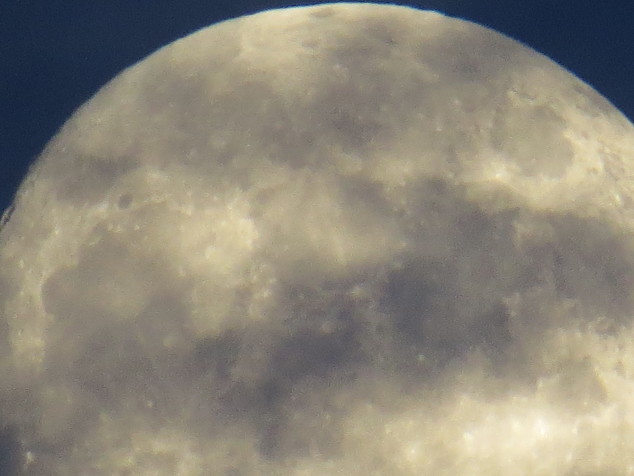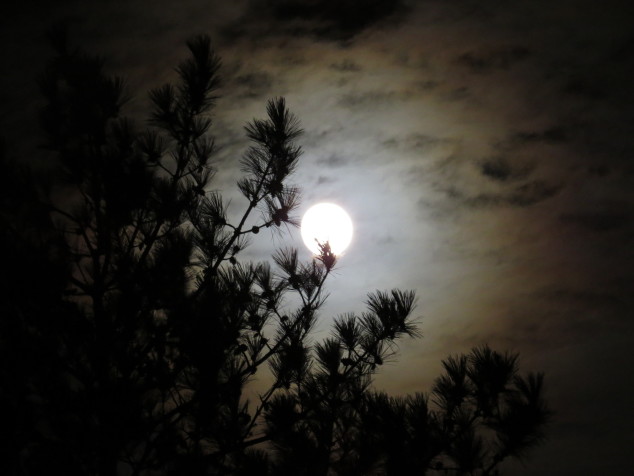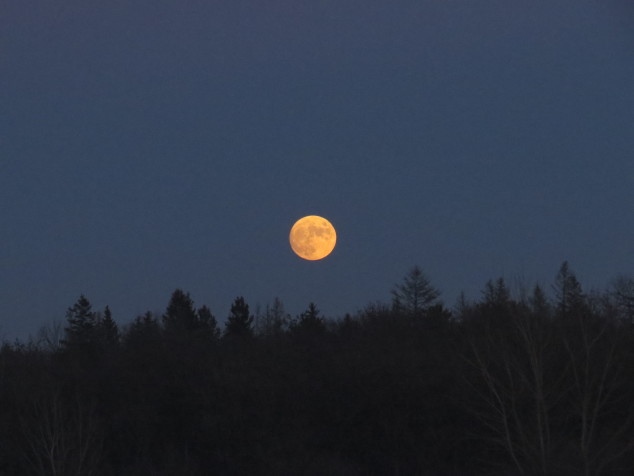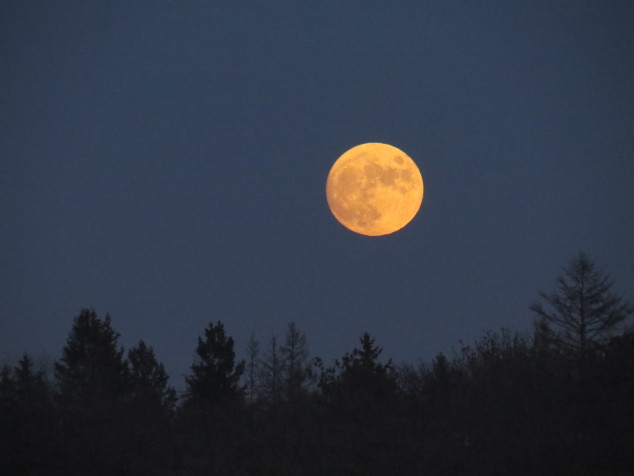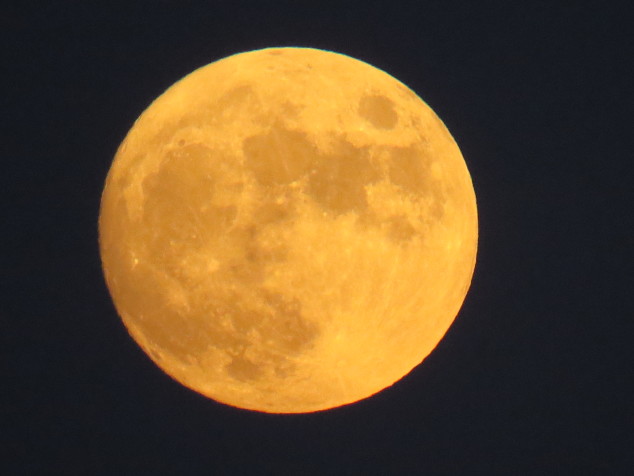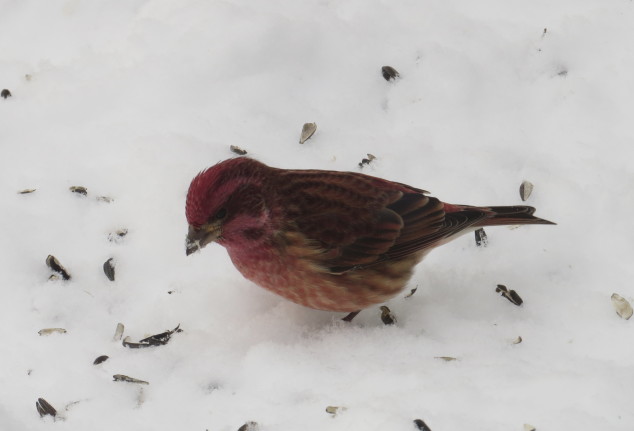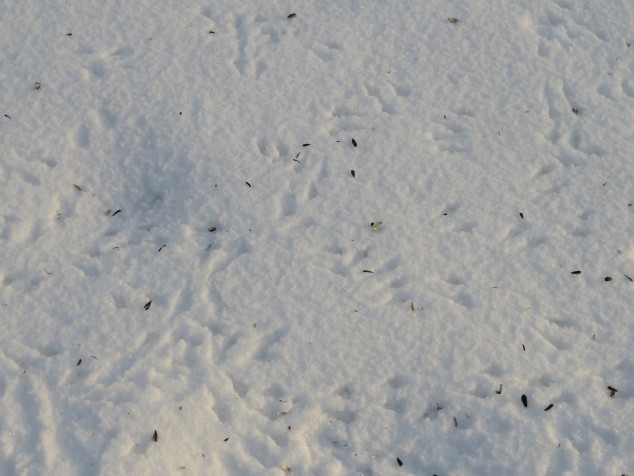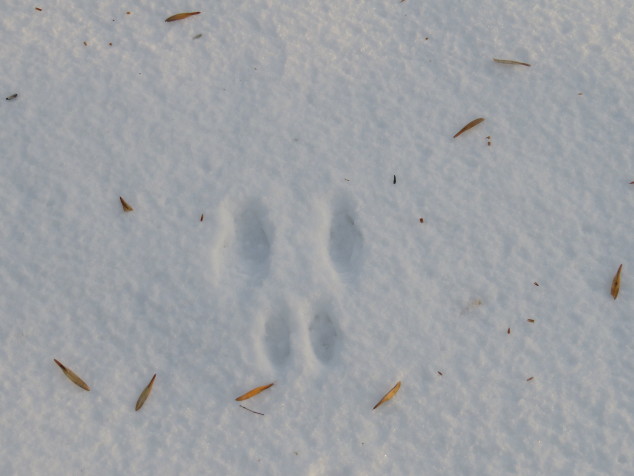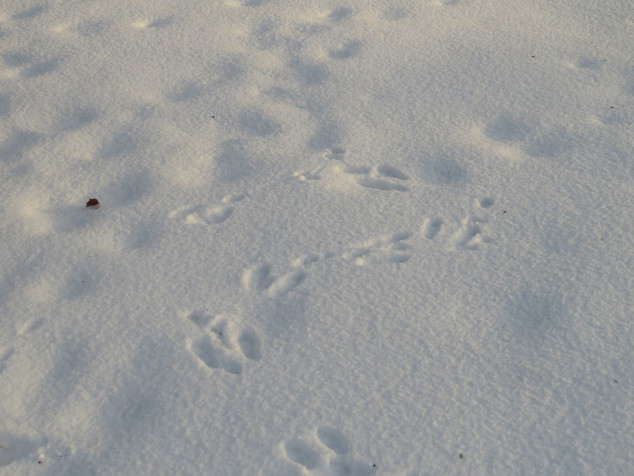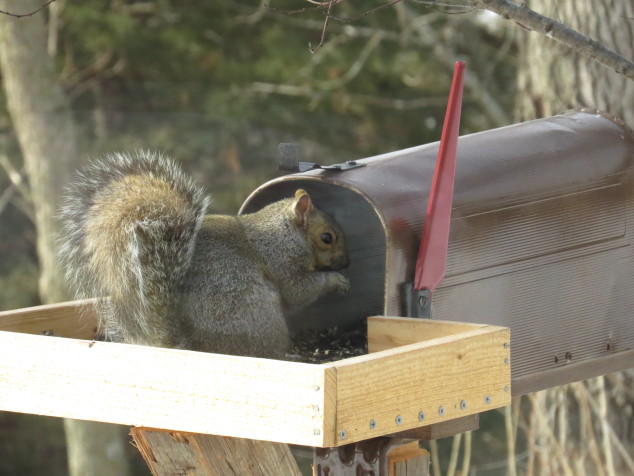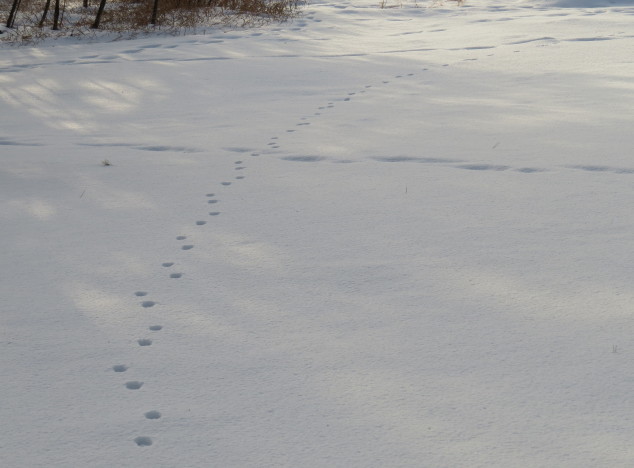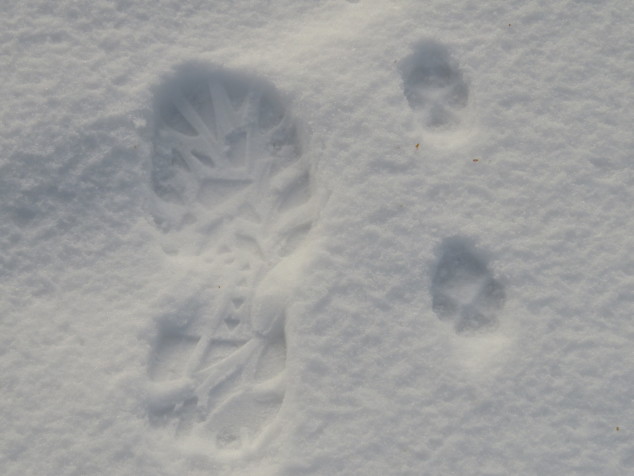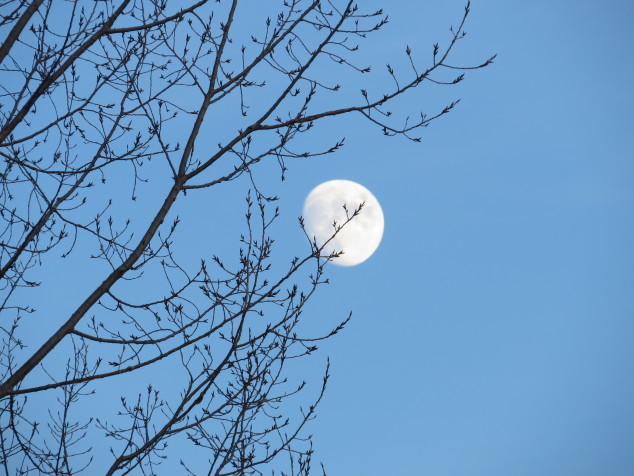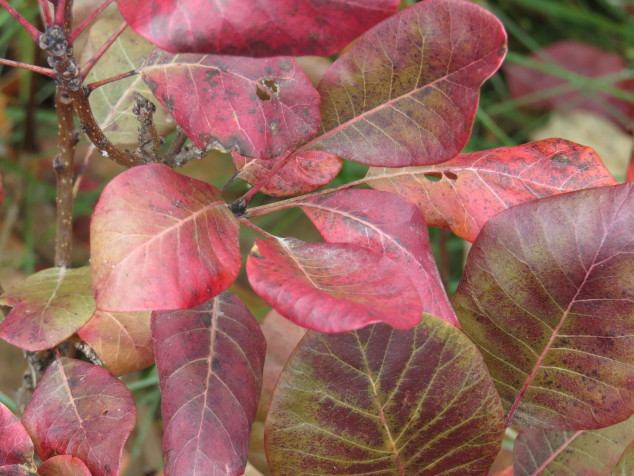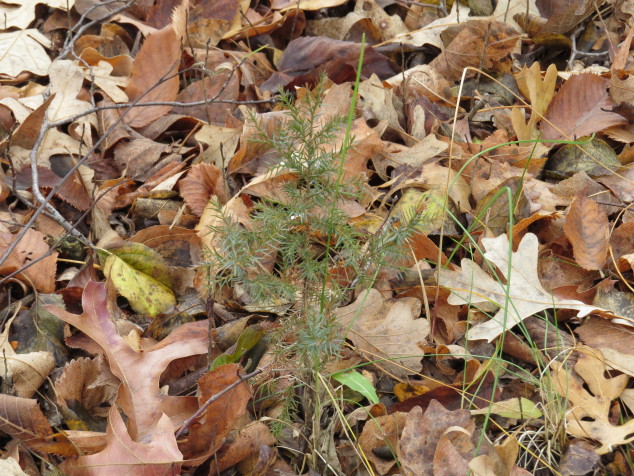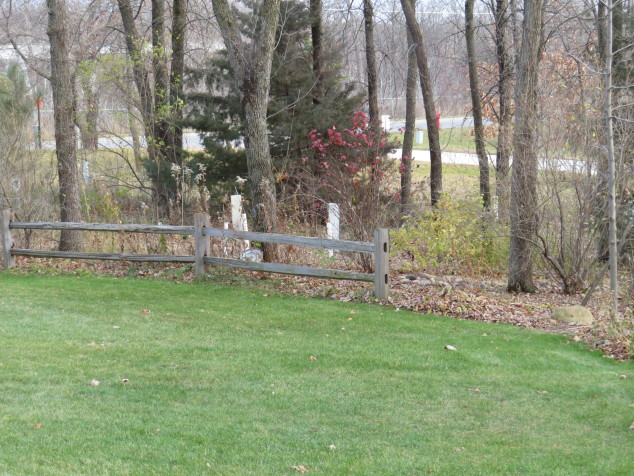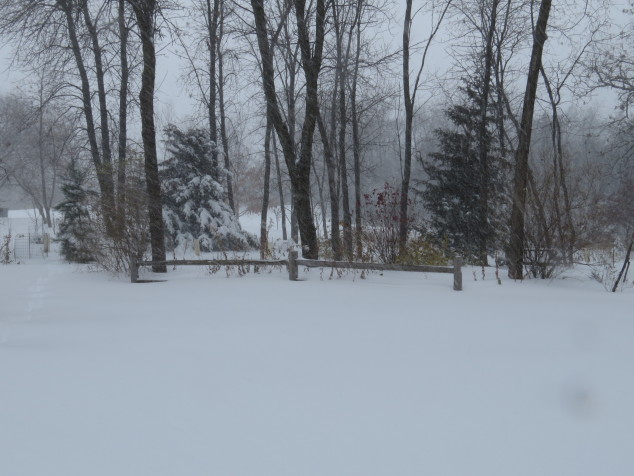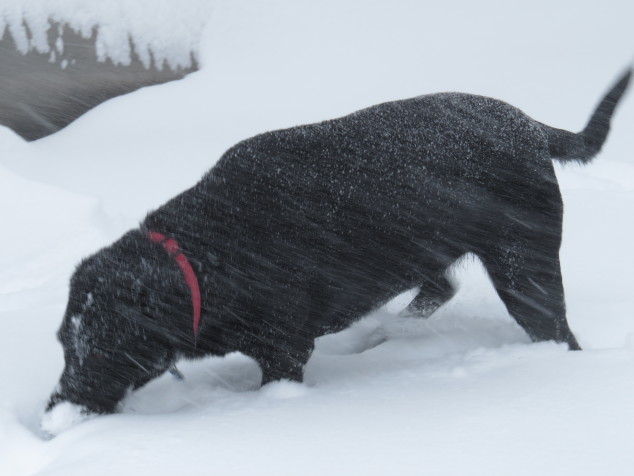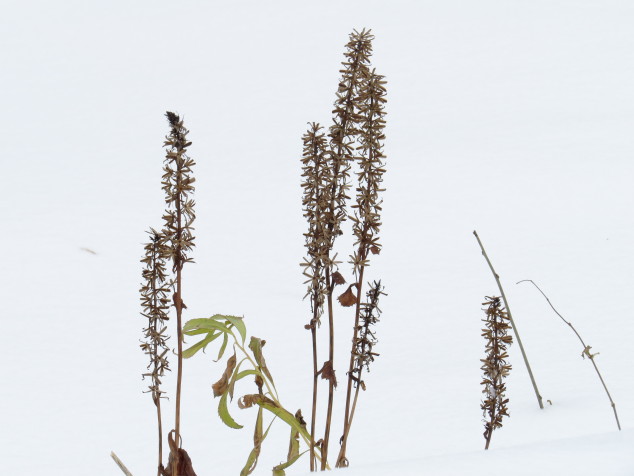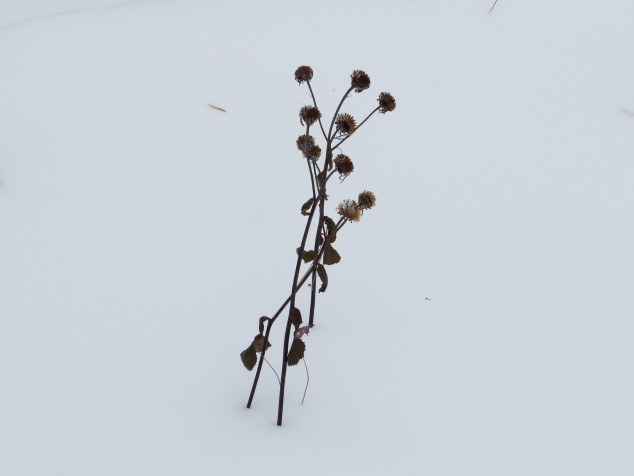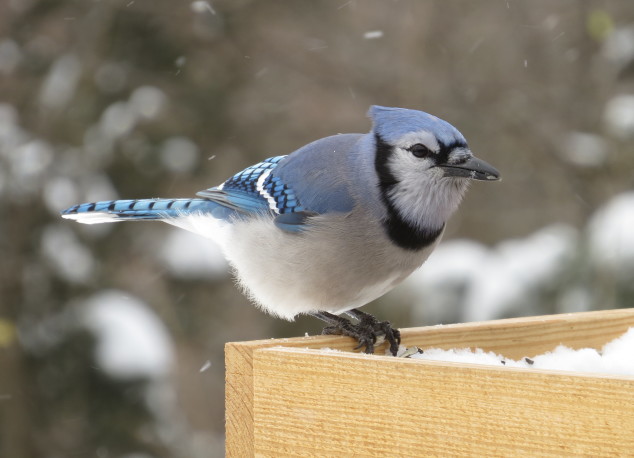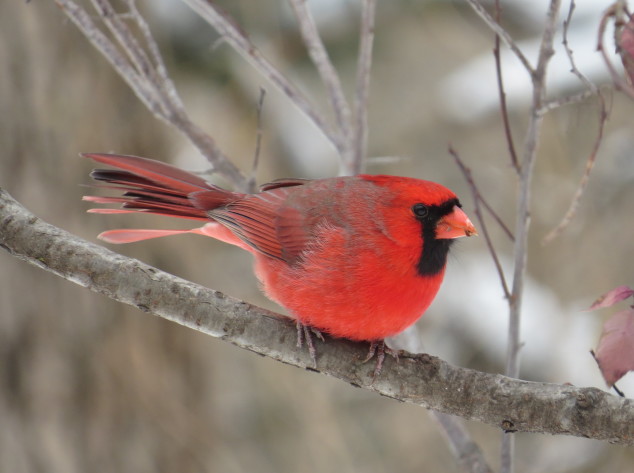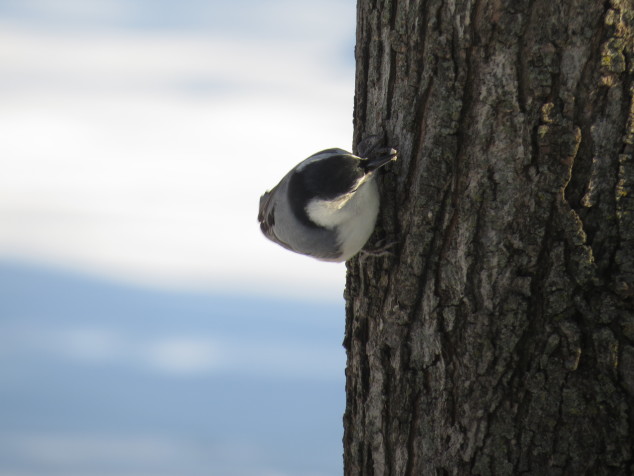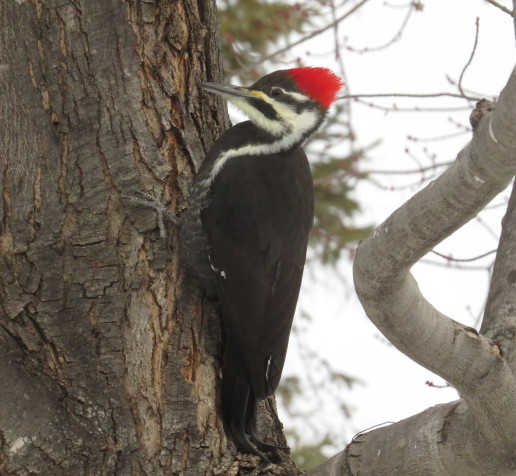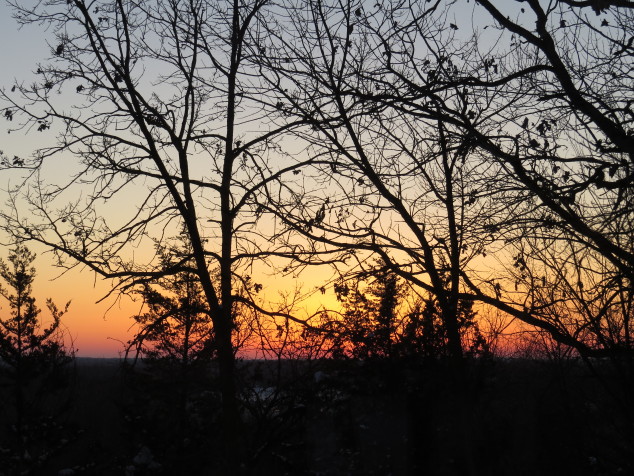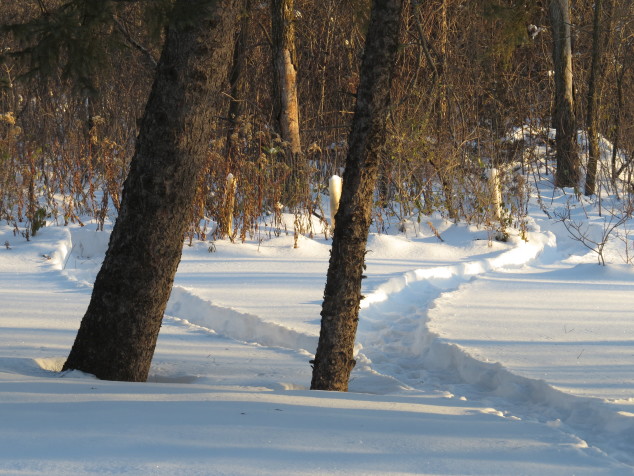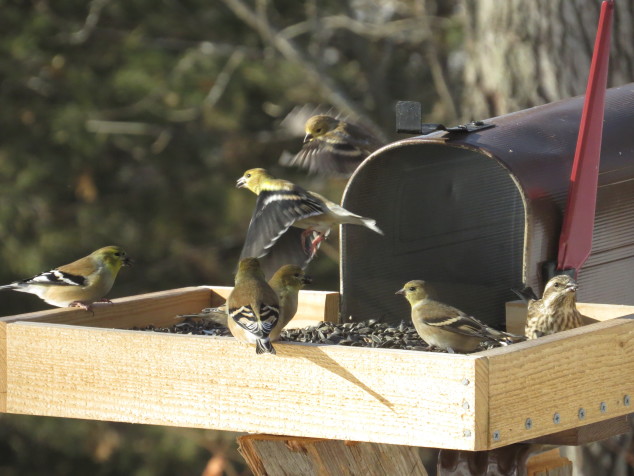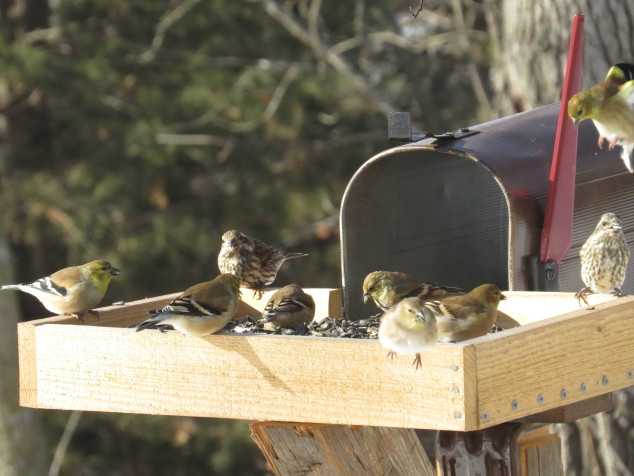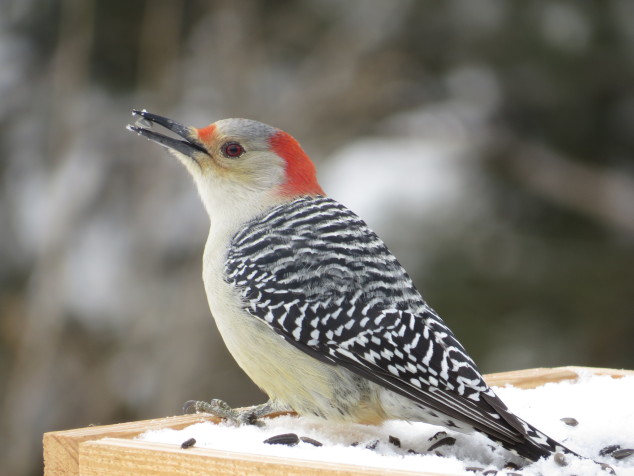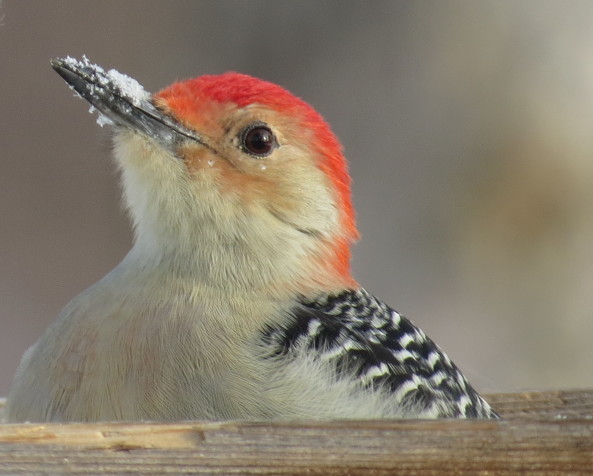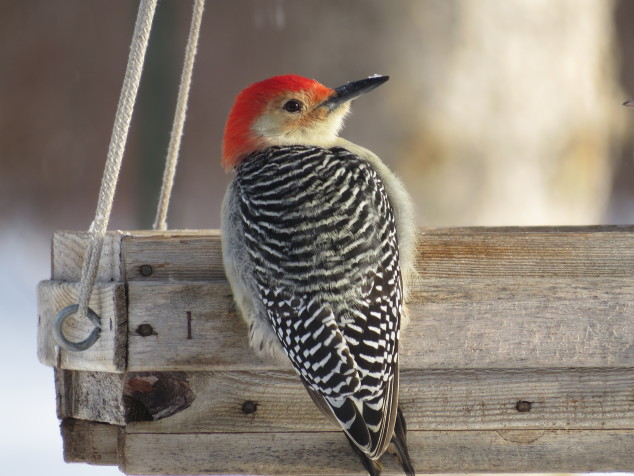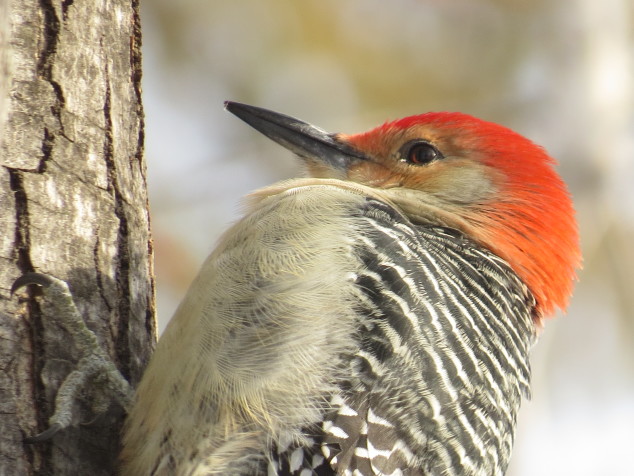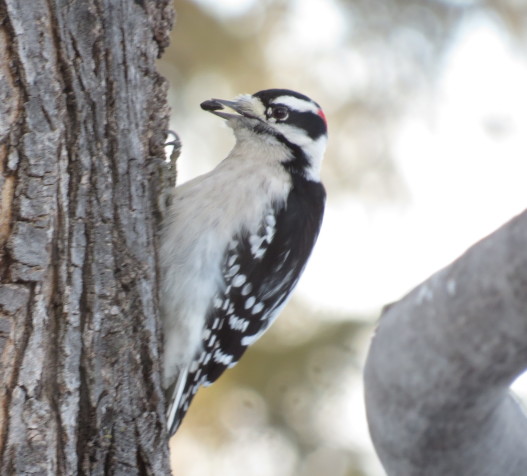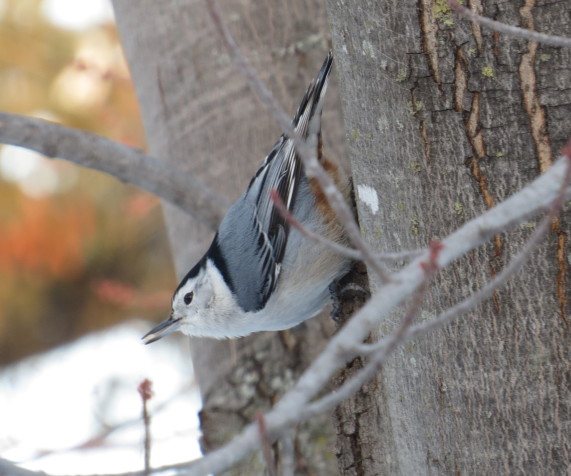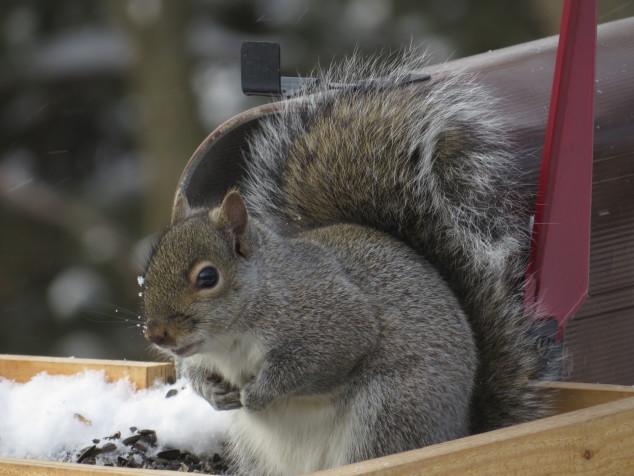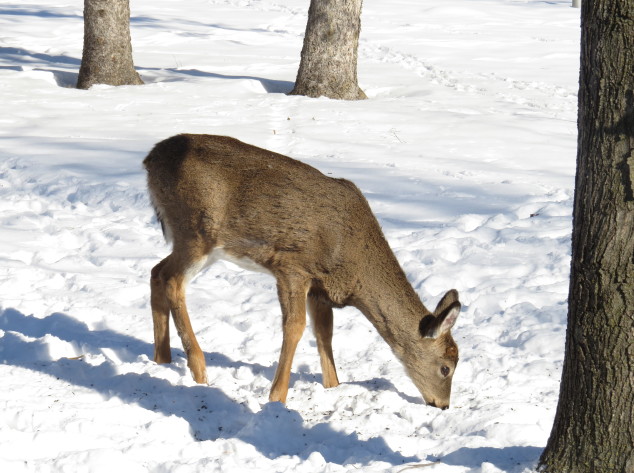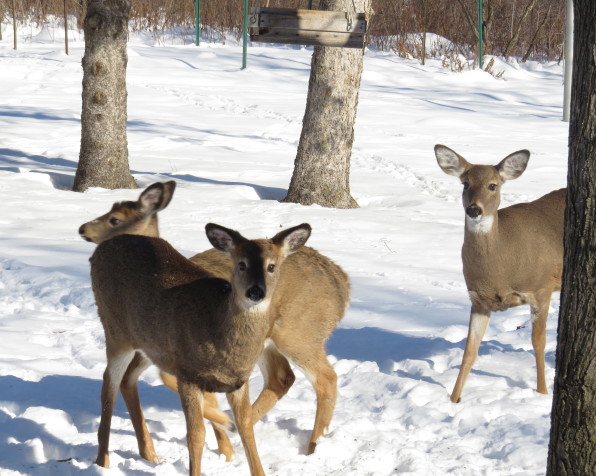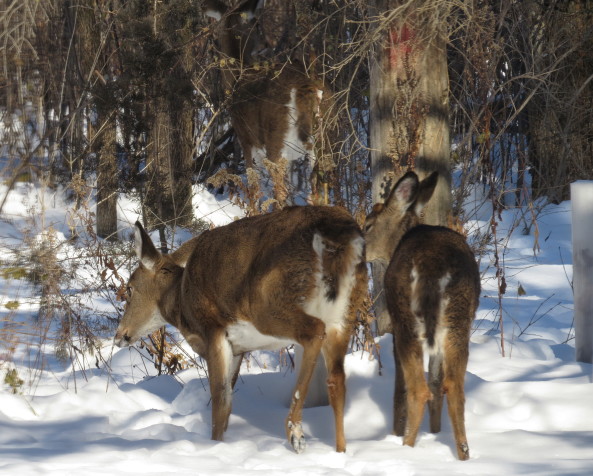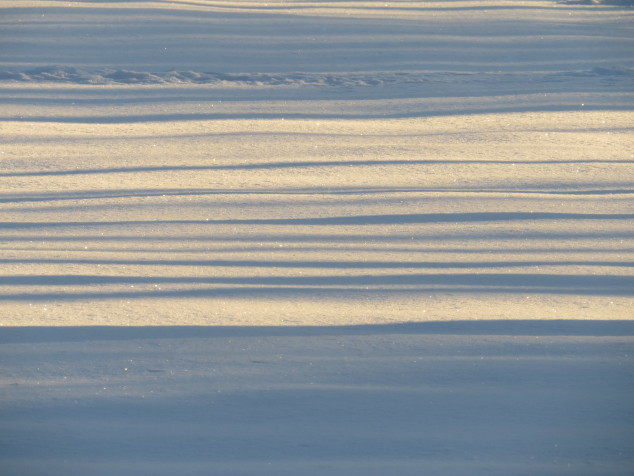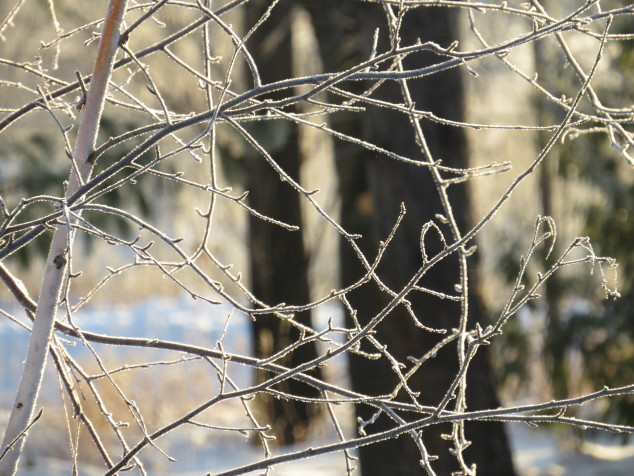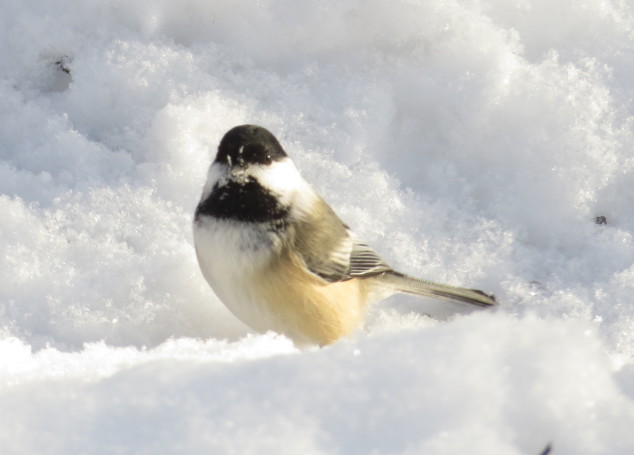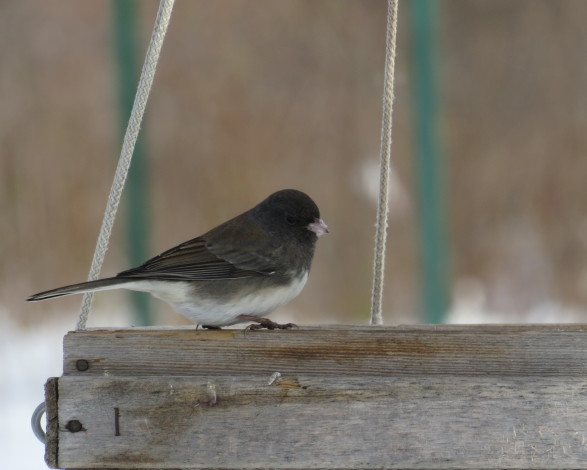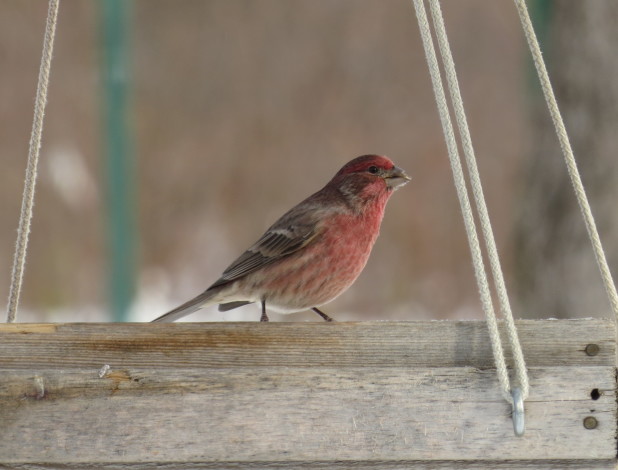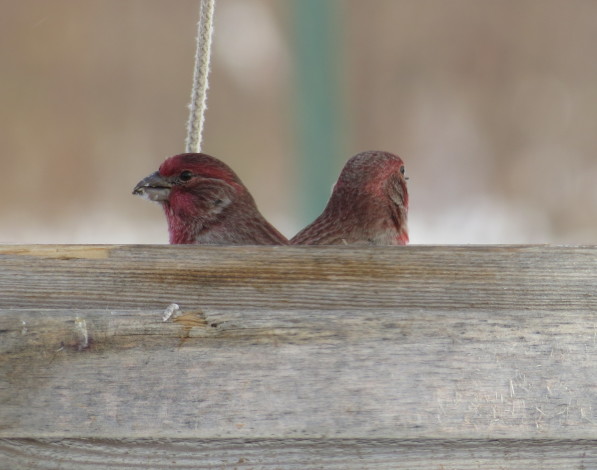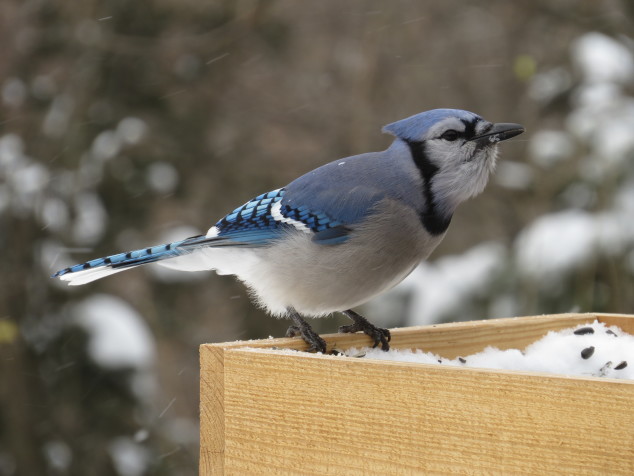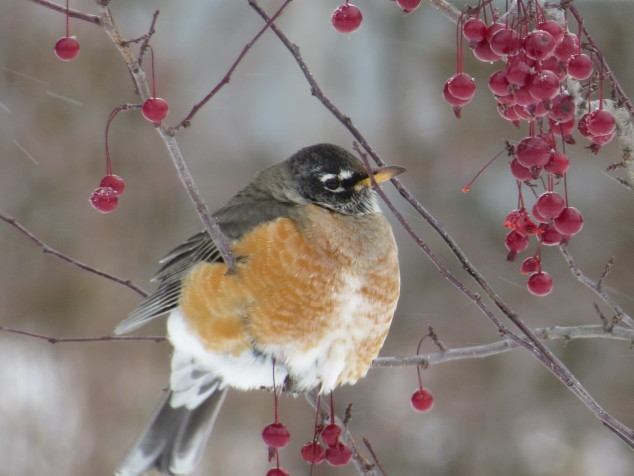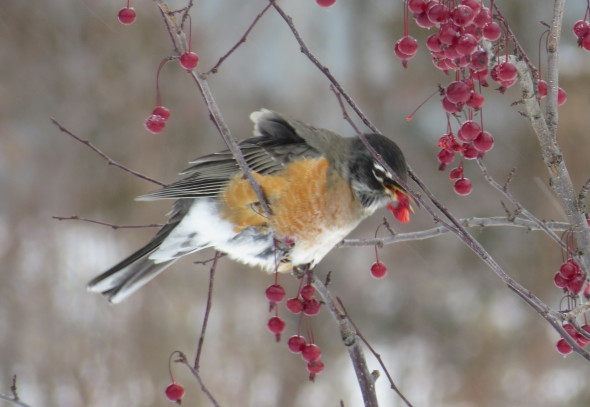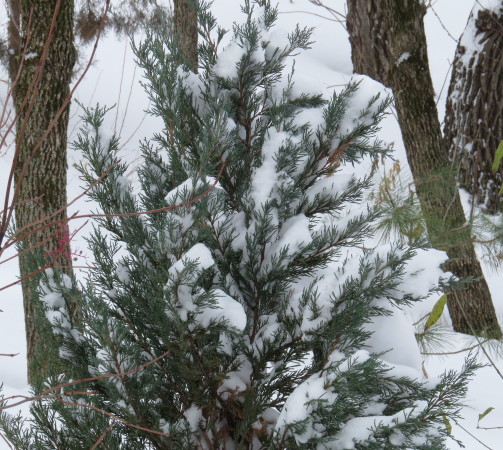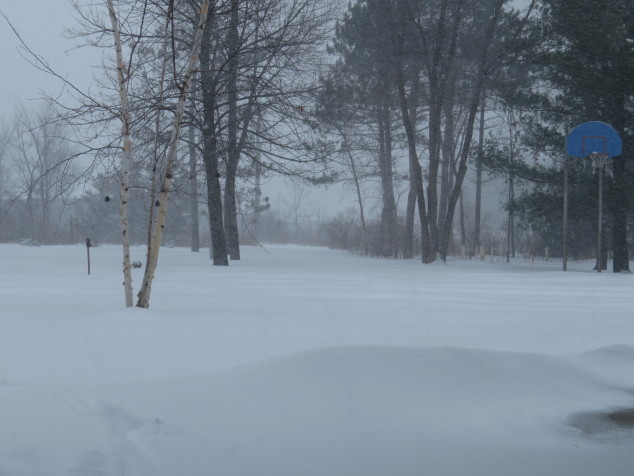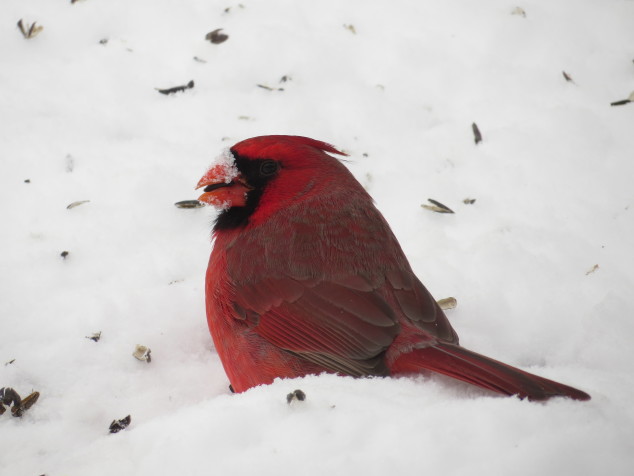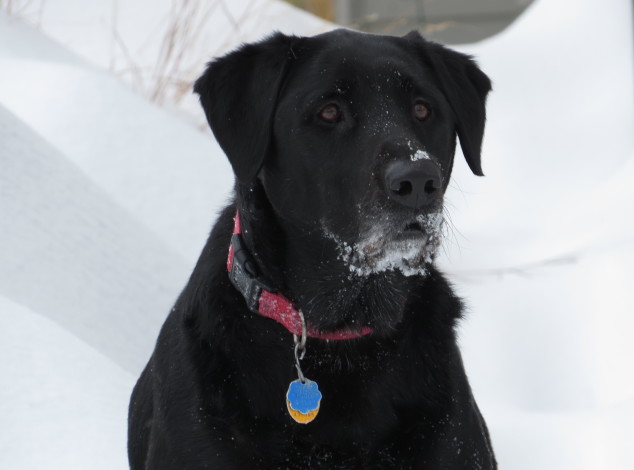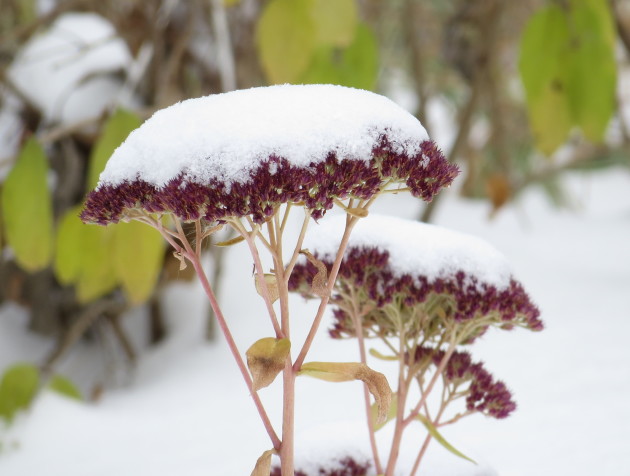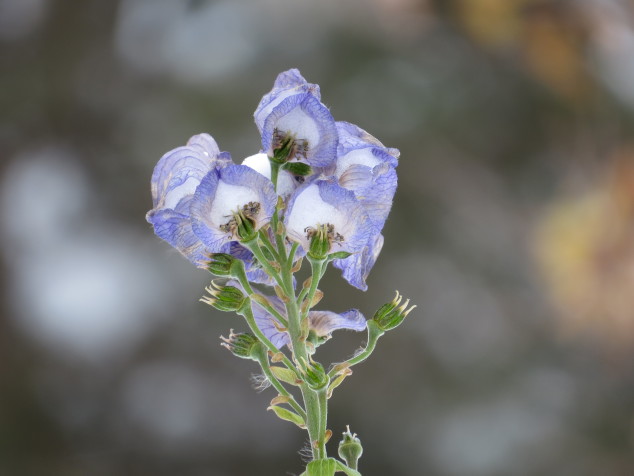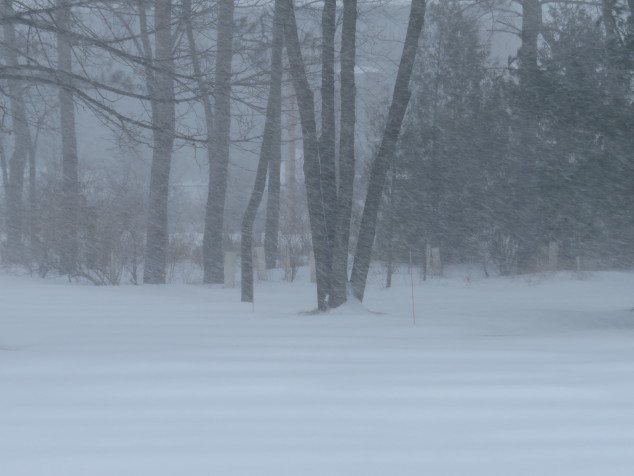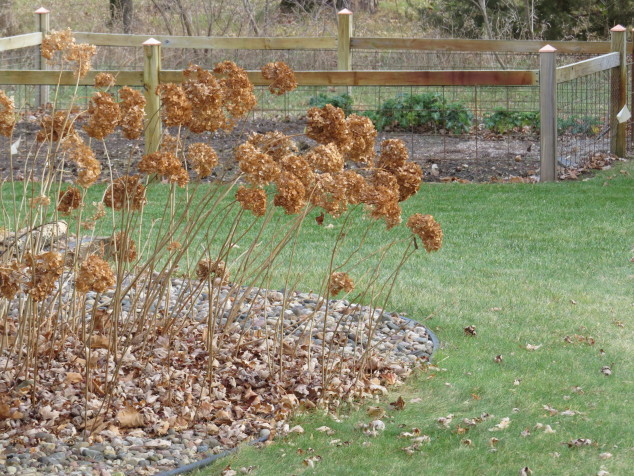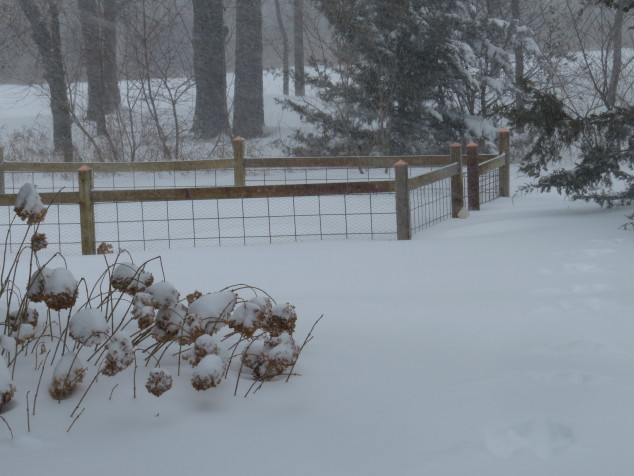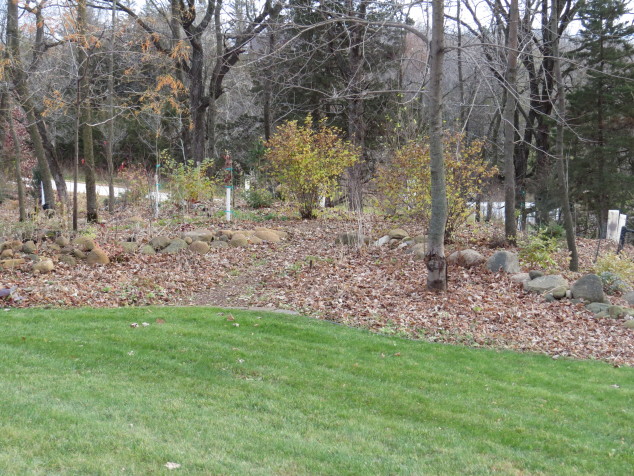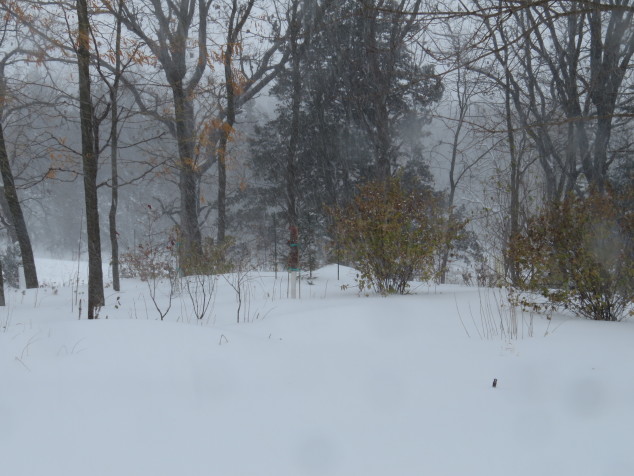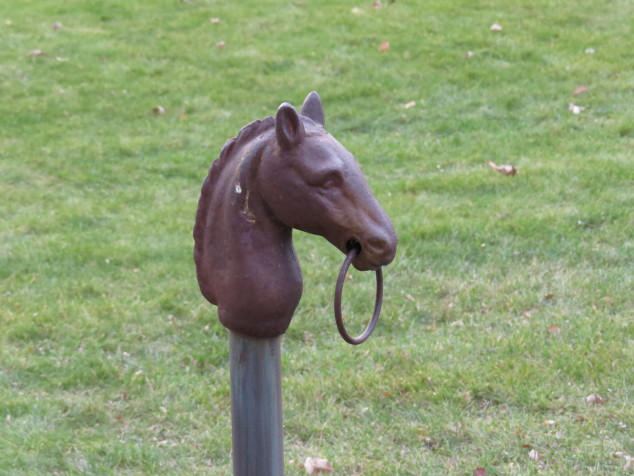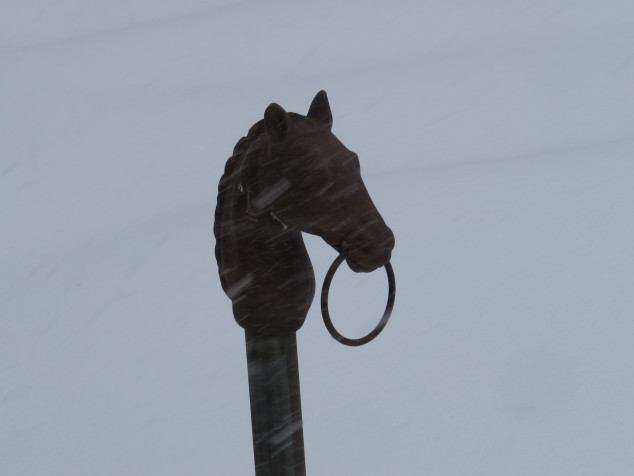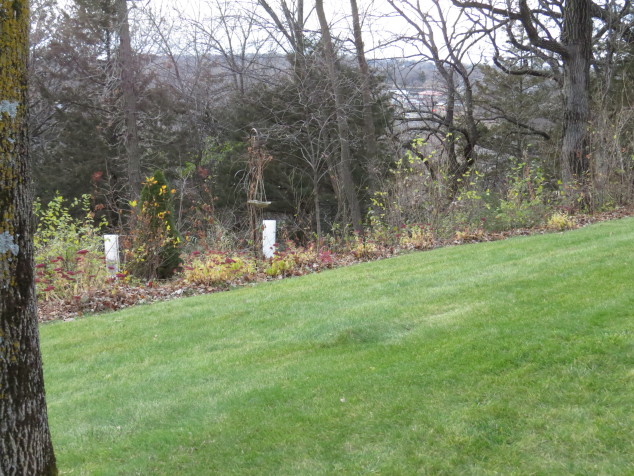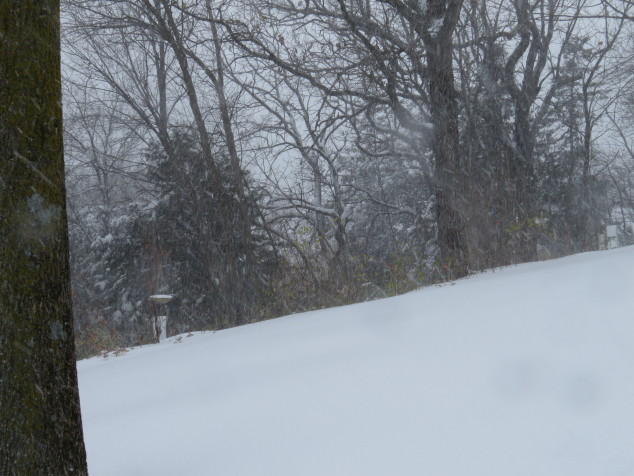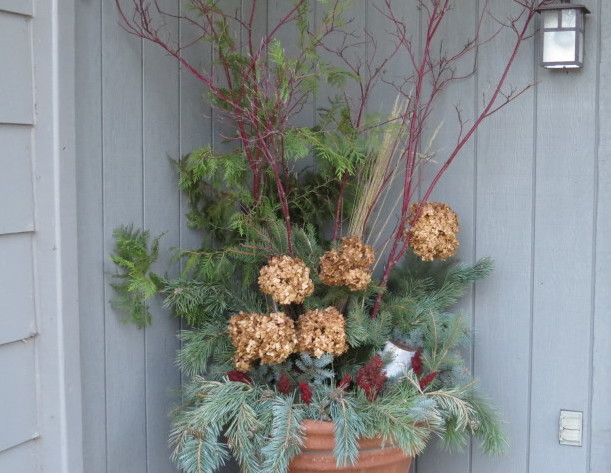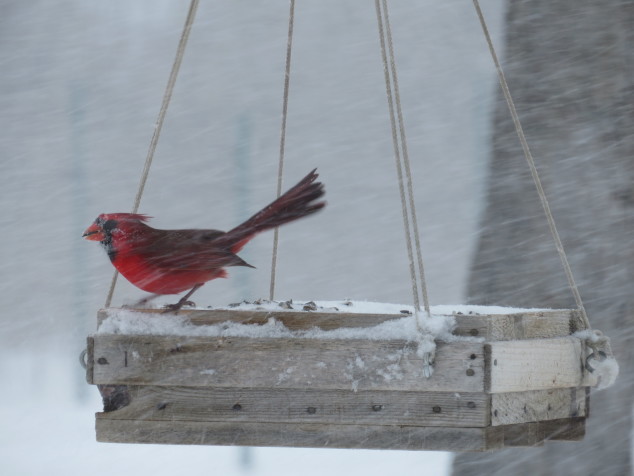I vividly remember a time in my life some years ago, when I felt confused and uncertain about what I was doing. The once rock-solid thoughts and ideals that had sustained me for decades fell away in a tattered heap, like a neglected old barn. I couldn’t think straight, I felt isolated from the swirl of people around me, and I couldn’t envision a path that would lead me out of that fog.
Central Minnesota has been in a fog for the last week. A warm front trapped our cool, snow-covered ground in an inversion. Icy rain fell a week ago Monday, coating sidewalks and roads in a slippery, bumpy film. By Wednesday, fog was forming above the rivers and wrapping the trees in frost. Friday, the temperature slid above freezing and started melting the snow.
The fog became denser as the water vapor was trapped beneath the thick clouds.
Water droplets formed on everything.
The surprising December thaw was the first in our seven years of living in Minnesota. Our frigid and snowy November seemed to have been inverted with December. The burlapped spruce, prepared for the dry, cold winds of winter, was drenched in fog and moisture. Our carefully planned protection was not needed–at least not yet.
I followed the path from our house to the river overlook.
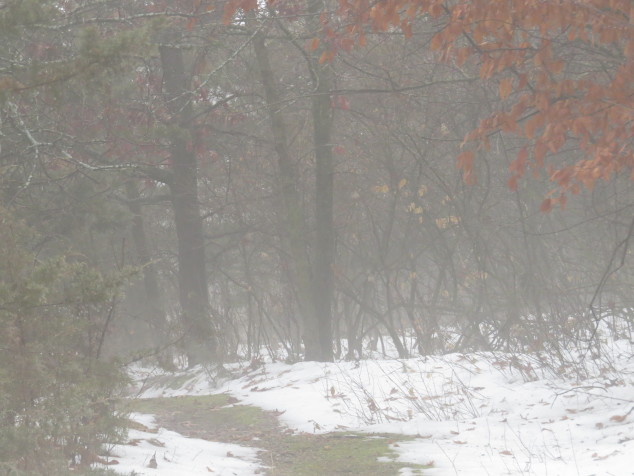 The fog was thick on the top of our hill, but over the river, it was a curtain of wet whiteness. (Here’s what it looks like on a clear day-sixth picture of the post.)
The fog was thick on the top of our hill, but over the river, it was a curtain of wet whiteness. (Here’s what it looks like on a clear day-sixth picture of the post.)
On the way back home, I passed a slushy puddle filled with oak leaves. It was a meeting of fall and winter. The bare trees were represented by their reflection in the melted snow.
In the same puddle, fox prints were cast in the slushy ice. Proof of her whereabouts. A meeting of human and fox tracks.
I could not see the river–I couldn’t even see the hillside and trees that went down to the river. The fog enveloped them all. It was confusing and surreal. It was like they didn’t exist.
That’s what the fog does in our lives. It slowly crawls over us, fooling us into believing that we know where we’re going. It can be unexpected and unexplained. It can lull us into thinking that what we can’t see doesn’t exist. But even in the thickest fog, the River is there. Even behind the burlap wall of protection, the Spruce is there. Even though I didn’t see the Fox, she was there. Each of us is there. Our path out of the fog happens one step at a time. Slowly we find our way. Then one day, we see our reflection in the place where Past meets Present. And with gladness, we notice that the fog has lifted.

